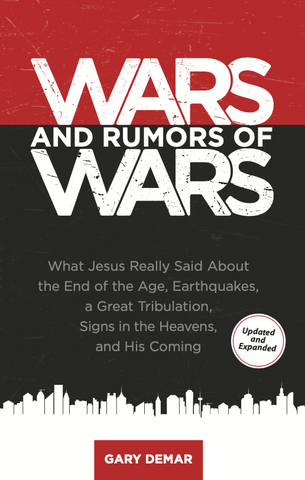Bible Prophecy Under the Microscope-Episode 63
Gary continues his discussion of Matthew 23-25 with Darren Doane.
Matthew 24:33 tells us what audience Jesus had in view: “so, you too, when you see all these things, recognize that He is near, right at the door.” It’s obvious, and without any need for debate, that the first “you” refers to those who asked the questions that led to Jesus’ extended remarks (Matt. 24:2-4). Jesus identifies those who will “see all these things” by using “you.”
There is no debate over the meaning or “referent,” a term Thomas Howe [1] uses frequently, of the first “you.” The first “you,” which he does not mention, refers to Jesus’ present audience. Howe claims the second “you” refers to a different audience, a supposed audience that “sees all these things,” which he argues is a future audience. Notice Howe’s equivocation: “this statement seems to indicate….” He knows he can’t say dogmatically, “this statement indicates” because it’s not self-evident to the reader that Jesus is referring to two different audiences separated by nearly two thousand years.
Who does Jesus say will see “all these things”? Certainly not a future audience. “So, you too, when you see all these things.” The first “you” is obviously Jesus’ present audience as is the second “you.” No one reading Matthew 24:33 could conceive that either use of “you” by Jesus refers to an audience different from the audience to whom Jesus was addressing. There is a third use of the second-person plural in verse 33. The Greek word ginōskete is also a second-person plural and means “you know” or “you recognize.”
If Jesus had a future generation in mind, He could have eliminated all confusion by saying, “even so they too, when they see all these things, they will recognize that He is near, right at the door. Truly I say to you, that generation will not pass away until all these things take place.” Of course, that’s not what the verses say.

Wars and Rumors of Wars
A first-century interpretation of the Olivet Discourse was once common in commentaries and narrative-style books that describe the fall of Jerusalem in AD 70. There is also a history of skeptics who turn to Bible prophecy and claim Jesus was wrong about the timing of His coming at “the end of the age” and the signs associated with it. A mountain of scholarship shows that the prophecy given by Jesus was fulfilled in exacting detail when He said it would: before the generation of those to whom He was speaking passed away.
Buy NowGary continues his discussion of Matthew 23-25 with Darren Doane. The two discussed what is known as Jesus’ Olivet Discourse a few years back, and this conversation picks up where they left off, continuing through Matthew 25. Many commentators see a break in the events of Matthew 24, with part of it being fulfilled in the first century and the rest being fulfilled in our future. Is this valid?
Click here for today’s episode
Click here for all four parts in the Olivet Discourse series
Click here for all episodes of Bible Prophecy Under the Microscope
[1] Thomas A. Howe, What the Bible Really Says: Breaking the Apocalypse Code (Eugene, OR: Wipf & Stock, 2009), 19. He cites Matthew 24:33 on page 10 but does not say anything about the use of the second person plural.

